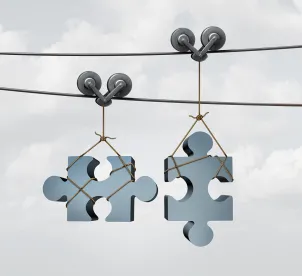Addressing for the first time whether real-parties-in-interest (RPIs) are evaluated at the time a petition is filed or at the time of institution for purposes of § 315(b), the US Court of Appeals for the Federal Circuit held that the statute requires consideration of all possible RPIs and privies at the time of institution. Power Integrations, Inc. v. Semiconductor Components Indus., LLC, Case No. 2018-1607 (Fed. Cir. July 13, 2019) (Prost, CJ). The Court also determined that Power Integration’s failure to appeal the Patent Trial and Appeal Board’s (PTAB’s) decision as to an earlier time bar under § 315(b) did not collaterally estop Power Integrations from appealing the PTAB’s decision in this inter partes review (IPR), even though issue preclusion would normally apply.
In 2009, Power Integrations sued Fairchild Semiconductor for infringement of one of its patents. Fairchild was served with the complaint alleging infringement on November 6, 2009. Several years later, Fairchild entered into a merger agreement with Semiconductor Components Industries. Before the deal closed, Semiconductor Components filed an IPR challenging the patent that had been asserted against Fairchild. The deal closed shortly before the PTAB instituted the IPR. In both the preliminary response and the patent owner response, Power Integrations alleged that the IPR was time-barred. The PTAB disagreed, holding that because Semiconductor Components was not time-bared at the time of filing, the IPR could move forward. The PTAB ultimately determined that the challenged claims were invalid. Power Integrations appealed.
While the appeal was pending, another IPR between the same parties fully and finally concluded in a final written decision, and the time for Power Integrations to appeal lapsed. In that earlier-to-conclude IPR, the PTAB reached the same conclusion on the same facts regarding lack of a time bar under § 315(b).
The Federal Circuit first addressed collateral estoppel. The circumstances would normally create estoppel because the earlier-to-conclude IPR culminated in a final judgment and the time-bar issue under § 315(b) was essential to that judgment. In this case, however, the Court found an exception under the “incentive to litigate” doctrine, finding that it would be unfair to hold Power Integrations to its decision to not appeal the earlier § 315(b) issue. Unlike the earlier-to-conclude IPR, where the subject patent was not associated with an underlying infringement finding, the subsequent IPR involved a patent with an underlying infringement finding and damages award against Fairchild and Semiconductor Components. The Court found that these circumstances created an exception to issue preclusion.
As to the time bar under § 315(b), the Federal Circuit evaluated the plain meaning of the statute, focusing on the language “an inter partes review may not be instituted if . . . .” The Federal Circuit reasoned that this language precluded institution, not filing. The Court rejected the argument that the conditional language following this prohibition on institution (“if the petition requesting the proceeding is filed more than 1 year after”) was a separate requirement, and concluded that this language sets the time for filing, not the scope of the director’s authority to institute review. Indeed, the Federal Circuit recognized that when the PTAB determines that that an IPR is time-barred under § 315(b), it does not reject the petitioner’s filing; it simply denies institution. The Court therefore determined that the statute mandates that § 315(b) be evaluated at the time of institution.
Practice Note: The Federal Circuit decision provides no guidance on whether waiting until after institution to complete a merger would save an otherwise time-barred RPI.



 />i
/>i

